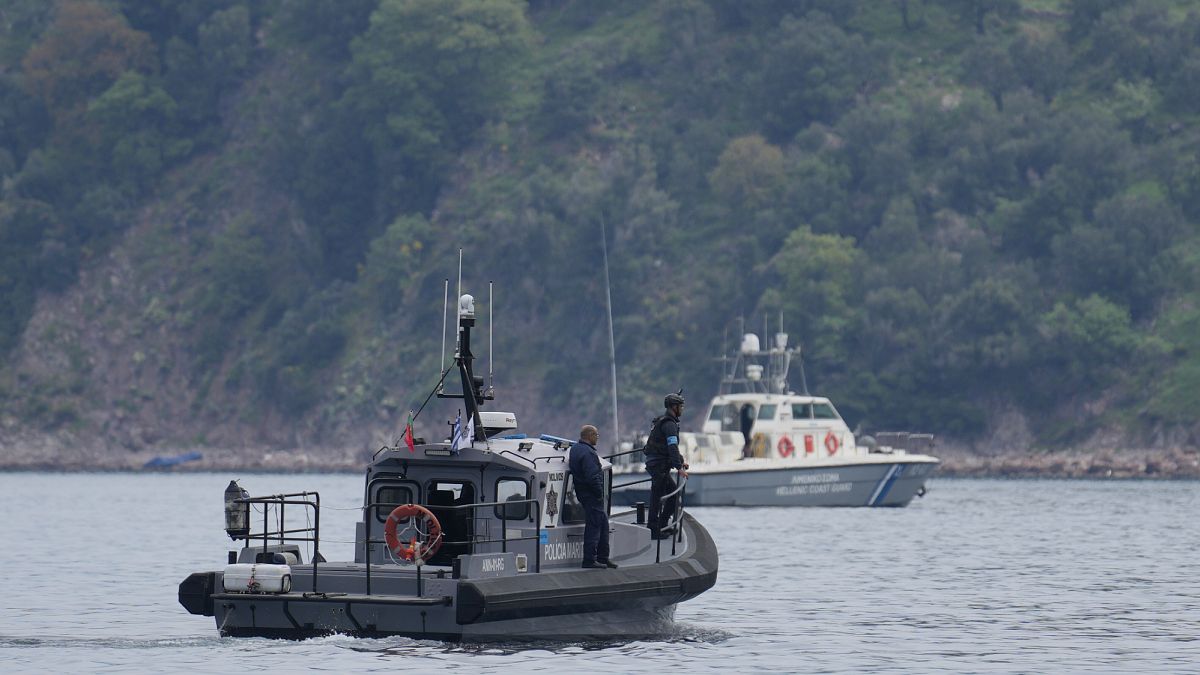Alaska
The future of Fisker: Alaska pickup, cute little Pear, Ronin sports car, and an off-road Ocean

Henrik Fisker’s electric startup reveals its plans for the next few years
Now that deliveries of the Fisker Ocean electric SUV are finally underway, the electric vehicle maker is looking full speed ahead to the future. At its very illustrious-sounding Product Vision Day event in Huntington Beach, California on Thursday night, Fisker showed the next round of products that’ll (hopefully) launch in the coming years: the Alaska pickup truck, subcompact Pear, and the Ronin sports car, along with a tough-looking version of the Ocean SUV, called the Force E.
Fisker’s goal? To someday build over a million vehicles per year. Sure; no pressure.
Advertisement – Page continues below
Fisker Alaska: extendable pickup with an enormous cup holder
The Alaska seems like the next logical step in Fisker’s evolution, since (1) America loves pickup trucks and (2) this one shares its architecture with the existing Ocean SUV. It’s a cool-looking midsize truck that packs a number of nifty features, the most novel of which is a drop-down midgate – the company calls this the Houdini Door – that lets the bed extend into the cabin, elongating the standard load length from 4.5 feet to an impressive 9.2 feet. It’s a grower, not a shower, if you catch our drift.
Fisker says the Alaska will be the world’s lightest and most sustainable electric pickup truck, and – weird flex – that it has the largest cup holder ever offered in a production car (how American). No specifics were given, but Fisker estimates the Alaska will have a driving range of anywhere between 230 and 340 miles, depending on configuration.
Because the Alaska shares its platform with the Ocean, it’s the one Fisker believes it can execute on the quickest, and company CEO/namesake Henrik Fisker says he wants the truck to be ready by the end of 2024, with the first deliveries taking place in 2025. In the US, the Alaska is expected to be priced from $45,400, and Fisker says it’ll be built in the States, as well, making the truck eligible for a federal tax credit of $7,500.
Advertisement – Page continues below
Fisker Pear: a sub-$30,000 EV with seating for six
Here’s a fun anecdote: Fisker says the Pear EV will have a slide-out compartment up front called the “front boot”, or “fruit”. Pear. Fruit. Get it?
In less punny matters, Fisker hopes to sell the compact Pear EV for as little as $29,900, and the company says this one will also be built in the US, meaning tax incentives could theoretically bring the starting price down to a super-low $22,500. That’s cheaper than a Honda Civic.
The Pear is a low, wide hatchback with an upright stance, and Fisker proved that this EV can seat six passengers by having it drive out on stage with six of the company’s employees shoehorned inside. Rather than a traditional liftgate for the hatch, the Pear has a slide-down rear end similar to the Alaska’s midgate, which Fisker says will make this little guy easier to load up in low-clearance garages and parking decks.
Fisker hopes to bring the Pear to market by mid-2025, but since this one rides on a completely new platform, there’s a lot to be done before that timeframe can be considered even remotely realistic. Also, are we the only ones that keep wanting to pronounce “Fisker Pear” like “Hüsker Dü?”
Thank you for subscribing to our newsletter. Look out for your regular round-up of news, reviews and offers in your inbox.
Get all the latest news, reviews and exclusives, direct to your inbox.
Fisker Ronin: only slightly less realistic than the movie
Fisker teased the Ronin sports car previously, but Thursday’s event in Huntington Beach gave us our first actual glimpse at what the production car could look like. Still very much a concept – as in, the show car doesn’t actually have an interior – the Ronin is a four-door, five-passenger convertible with a carbon fiber folding roof.
The Ronin’s specs would’ve sounded like the stuff of vaporware years ago, but today, these wild numbers aren’t too far fetched. Fisker says the Ronin will have three electric motors producing more than 1,000hp combined, and it’ll come with all-wheel drive, allowing this EV to hit 60 mph in two seconds flat. The only eyebrow-raising detail Fisker divulged about the Ronin is that the sports car will have a 600-mile driving range. Consider us skeptical of that one.
When will we see the road-going Ronin? That’s very much TBD. All we know is that Fisker says this convertible will be “ultra-luxury priced” (read: very expensive) and will be “built in limited quantities” (read: not very many). Fisker calls the Ronin its “technology carrier” and future flagship, yet at the same time, it seems like the one least likely to make it to production. Fingers crossed.
Fisker Ocean Force E: for all you off-road-y types
The last bit of Fisker’s future product offensive is a neat little upgrade package for the Ocean called the Force E. This isn’t a standalone, purpose-built off-roader – it’s an upfit for the current Ocean, and Fisker says it can either be ordered like this as a new car, or can be retrofitted onto existing vehicles.
The highlights? Massive 33-inch all-terrain tires wrapping 20-inch wheels, skid plates, wheel arch extensions, extra lights, recovery hooks, and a huge, aerodynamic-killing roof basket that’ll almost certainly tank the Ocean’s electric driving range. Look for this one to become available in early 2024.
And now, a very big grain of salt
We’ll admit, seeing the Fisker product portfolio like this kind of reminds us of when former Lotus CEO Dany Bahar unveiled six concept cars at the 2010 Paris Motor Show. None of those concepts ever came to fruition, but hey, the smorgasbord of Lotuses sure got everyone talking.
Fisker’s track record is certainly better, though Henrik’s multiple business ventures over the past few decades have hardly been successful. Still, we hope Fisker’s incredibly ambitious plans are realized, and in a timely fashion, too. Purposeful pickups and low-cost electric hatchbacks have mega appeal as EV adoption increases.
And that Ronin, well, it just looks hella cool.

Alaska
Alaska Senate Education Committee advances new school funding bill with $1,000 per-student boost

JUNEAU — The Alaska Senate Education Committee on Wednesday advanced an amended school funding bill with a $1,000 increase to the Base Student Allocation, the state’s per-student funding formula.
School administrators have been advocating for a $1,000 BSA boost, saying the public education system is in crisis. Districts report that hundreds of educators face being fired, popular programs are set to be cut and that school facilities are crumbling.
But many in the Legislature, including some members of the Democrat-dominated Senate majority, believe a school funding increase of that size would be unaffordable with the state facing a substantial deficit. The $1,000 BSA boost would cost roughly $250 million per year.
Last month, the House approved House Bill 69 with the same school funding increase. It contained several policy provisions intended to appeal to Gov. Mike Dunleavy who vetoed a bipartisan education package last year.
The House measure included limits on cellphones and plans to make it easier for students to attend the public school of their choice, regardless of where they live, among other policy provisions.
“We recognize that we need to have a substantial increase to school funding,” said Anchorage Democratic Sen. Löki Tobin, chair of the Senate Education Committee, at a Tuesday media conference.
A new version of House Bill 69 was unveiled Wednesday in the committee. But its total cost has not been estimated yet.
Staff for Tobin highlighted some of its new policy provisions: School districts would be required to set target class sizes and explain why they are unable to meet them; if three-quarters of a class shows improvement academically, the school can get recognition or financial benefits; and provisions were added to make it easier for charter schools to appeal denials of applications — among other changes.
“I’m generally pretty excited about it. I think it’s a good bill,” said Sitka independent Rep. Rebecca Himschoot, who was the lead sponsor behind the original version of HB 69.
The measure advanced from the Senate Education Committee on Wednesday with unanimous support. Tok Republican Sen. Mike Cronk, a minority member, was absent from Wednesday’s hearing.
At the start of the legislative session, the nonpartisan Legislative Finance Division estimated that a BSA boost of more than $1,800 would be needed to make up for losses from almost 15 years of inflation.
Since then, education advocates have been calling for the $1,000 BSA increase.
Anchorage School District began informing more than 180 educators this week that their positions will be eliminated unless the Legislature substantially raises school funding. Displaced staff would get opportunities to fill vacant positions, district officials said.
However, some Republican lawmakers have said that a school funding increase must be tied to improvements of Alaska’s bottom-of-the-nation test scores.
Lisa Parady, executive director of the Alaska Council of School Administrators, told a joint meeting of the House and Senate Education Committees on Monday that the state’s public school system needs a major investment to be made whole.
“When I hear, ‘education is failing,’ I say, ‘No, education is starving. It’s not failing. It’s starving,’ ” she said.
HB 69 heads now to the Senate Finance Committee. It remains unclear whether the $1,000 BSA boost will be approved by the full Senate.
Kodiak Republican Senate President Gary Stevens acknowledged Tuesday that his majority caucus remained split on the BSA, reflecting similar divides across the Legislature.
Lawmakers are balancing a school funding boost against this year’s Permanent Fund dividend.
“As you’re well aware, when we raise education funds, we sometimes have to lower the dividend amount,” Stevens said at a Tuesday media conference. “So that’s an issue that our caucus is dealing with, and hopefully we will come to a conclusion and be able to come to agreement with the House as well.”
In contrast, Wasilla Republican Sen. Mike Shower, the Senate minority leader, said his six-member caucus was not split on the BSA. He said by text Tuesday that the caucus could “tolerate” a $680 boost to the funding formula, which would match the same figure appropriated last year on a one-time basis.
The cost of a $680 boost to the BSA would be roughly $175 million per year.
Sitka GOP Sen. Bert Stedman, a co-chair of the Senate Finance Committee, said there was broad recognition that the current school funding formula is insufficient. He said the Legislature should approve “a minimum” of a $680 BSA boost this year, matching the school funding figure modeled in the Senate Finance Committee’s budget discussions.
Senate majority members on Tuesday spoke in favor of new revenue measures to bridge the state’s fiscal gap over the next several years.
Senators have introduced bills to raise state revenue, including by hiking oil taxes, but those measures could face long odds of being approved by the narrowly divided House.
But a $680 boost to the Base Student Allocation may not be enough for many of the state’s 53 school districts.
Clayton Holland, superintendent of the Kenai Peninsula Borough School District, told lawmakers that a school funding increase of that size would still see layoffs. The district is set to send out warning notices this week to 160 educators that their positions could be cut with a $680 increase to the BSA, he said.
Legislators have shown a renewed interest in increasing spending for school maintenance after a report by KYUK and ProPublica detailed the results of years of underfunding rural school infrastructure.
Holland, who also serves as the head of the Alaska Superintendents Association, told legislators Monday that Kenai schools have a $400 million deferred maintenance backlog. He said walls and roofs in schools across the district are crumbling.
Holland said his most “shocking story” about infrastructure failings comes from Nanwalek, a small community off the road system on the Kenai Peninsula. He said the school’s pipes are old and corroded.
“On a regular basis, my principal has to have a vacuum cleaner to suck up sewage coming out of those pipes in order to keep the school going,” he said.
One potentially contentious policy area of House Bill 69: provisions affecting homeschooled students.
The Alaska Supreme Court recently asked a lower court to determine whether it is constitutional for those students to use public funds to pay for private school tuition.
HB 69 would require greater district oversight of how homeschool allotments are used.
Additionally, House Republicans sought a funding boost for homeschooled or correspondence students, but those proposals were rejected and do not appear in the Senate’s education bill.
One new provision added to HB 69 would require homeschooled students to take state tests, alternative assessments or to produce a portfolio to receive allotments from the state. Currently, around 15% of homeschooled students take a key annual state test, which has frustrated some in the Legislature, who say the performance of correspondence students is difficult to track.
Nikiski Republican Sen. Jesse Bjorkman, a former teacher, amended the bill so that the testing requirements would only take effect in July 2026.
Alaska
Alaska Legislature OKs 18-year-olds serving alcohol in some venues

JUNEAU — The Alaska Legislature on Wednesday approved a measure that would allow 18-year-olds to serve alcohol in some venues.
The Legislature passed an almost-identical version of the bill last year. It was approved by lawmakers after the constitutional deadline for the end of the legislative session. Gov. Mike Dunleavy vetoed the bill, along with four others, arguing that they could face legal challenges.
Senate Bill 15 would allow 18- to 20-year-olds to serve alcohol under supervision in restaurants, breweries and hotels, but not bars or liquor stores. Currently, Alaskans must be 21 or older to serve alcohol in those venues.
The measure also adds a warning wherever alcohol is sold of its risks of causing cancer.
Supporters of the measure said lowering the age limit to serve alcohol would help address some of the Alaska hospitality industry’s labor challenges. Anchorage Democratic Rep. Zack Fields said the policy change would help the industry for the upcoming summer tourism season.
“For young adults who are attending college outside of Alaska, this bill increases the likelihood that they can return and work during the summer season and get really good-paying jobs,” he said before Wednesday’s final vote.
Anchorage independent Rep. Alyse Galvin supported the bill and said she worked in restaurants during college. She said being unable to serve alcohol meant she earned less money.
The House passed the measure Wednesday on a 32-8 vote. All eight no votes were by minority Republicans. They did not explain their opposition during floor debates. The Senate passed the measure unanimously in February.
Wasilla GOP Rep. Cathy Tilton voted against the measure. She said after the floor session that she supported a right to work, but she was concerned about introducing younger Alaskans to alcohol, considering the state’s high rates of addiction and abuse.
Only three U.S. states — Alaska, Utah and Nevada — require alcohol servers to be at least 21 years old.
Sarah Oates, president of the Alaska Cabaret, Hotel, Restaurant and Retailers Association, or CHARR, said that Alaska’s age limit has caused labor challenges for the hospitality industry.
“Employers struggle to promote or retain quality employees who are 18-20 years of age because they are prohibited from serving alcohol or supervising other employees who serve or sell alcohol,” she said. “Alaska is not competitive in this space, and our industry is experiencing an outmigration of young workers.”
The measure also requires new language to be added to warning signs wherever alcohol is sold. Currently, those signs say that drinking alcohol “during pregnancy can cause birth defects.”
SB 15 would require an additional warning about cancer risks, stating on signs that “alcohol use can cause cancer, including breast and colon cancers.”
Former U.S. Surgeon General Vivek Murthy in January called for cancer risk warnings to be added to alcoholic beverages. Adopting Murthy’s advisory nationally would require a measure passed by Congress.
Anchorage Democratic Rep. Andrew Gray, a physician assistant, supported adding the cancer warning signs last year. On Wednesday, Gray said he drinks alcohol, and that he isn’t trying to demonize alcohol.
“Rather, I just want Alaskans to make informed decisions about their health,” he said.
The Legislature has now approved two of five vetoed bills passed last year after the constitutional deadline for the end of the session. In February, lawmakers again approved a $75 million bonding package for a new cruise ship dock in Seward.
After Wednesday’s vote, SB 15 now advances to the governor’s desk for his consideration.
Alaska
Cheeseburgers and chicken so far fail to entice a rescue dog who's spent weeks on the run in Alaska
JUNEAU, Alaska (AP) — In the days after wildfires devastated the Los Angeles area, a formerly stray dog named Jackie lucked into a new life. She was rescued from an overburdened shelter in Los Angeles County, where she faced possible euthanasia, and given a home far away in Juneau, Alaska.
But Jackie didn’t stay long.
The German shepherd-husky mix slipped her collar on the first day with her new family in mid-February and absconded to a pocket of forest. Since then, she has been living by her wits — eluding a trap that was set with food such as cheeseburgers or chicken by animal control workers and volunteers worried about her.
The forested area Jackie frequents is near a busy road. Further, black bears are starting to reemerge from hibernation, raising the potential the dog could have an unfortunate run-in. Volunteers have stopped putting out food and cat kibble to avoid attracting bears.
“Maybe this is what she wants, is to be free and feral like this,” said Thom Young-Bayer, a Juneau animal control officer. “It’s not a safe way for her to live here.”
Young-Bayer and his wife, Skylar, have been searching in their free time, often at night, for the skittish canine, painstakingly trying to build trust with her. Jackie has been known to burrow into the soft moss on the forest floor for cover and to avoid looking directly into the Young-Bayers’ headlamps, making it hard to detect her eyes in the dark.
On videos Thom Young-Bayer has taken with his infrared camera, Jackie’s red heat signature resembles something out of the movie “Predator.”
On a recent day, Young-Bayer caught a fleeting glimpse of Jackie in the lush forest, her dark coat helping camouflage her movements among the stumps and roots. He surveyed the undergrowth and surroundings but came up empty — as did a nearby trap he had been monitoring for weeks.
When Young-Bayer returned to a trail where a fellow animal control officer had been waiting, he learned Jackie had trotted past on a frozen pond.
Lately Young-Bayer been encountering Jackie on every visit. Young-Bayer says that’s progress. Weeks ago, if Jackie saw someone, she would flee. He and his wife aren’t trying to sneak up on the dog and want to help her feel safe, he said.
Juneau Animal Rescue, a local pet adoption agency that also handles animal control and protective services, has asked that people who see Jackie report their sightings. Given the dog’s skittishness, officials want to limit those searching for her.
Little is known about Jackie’s history. She was brought into a California shelter as a stray in early January, days before deadly wildfires swept through the Los Angeles area. She is believed to be 2 to 3 years old. Her intake forms listed her as quiet with a moderate anxiety and stress level.
Skylar Young-Bayer, who has volunteered with rescue groups in that region, helped arrange for Jackie and two other dogs at risk of being euthanized to be transferred to Juneau for adoption. Jackie was with a foster home before her adoption placing.
Other dogs have gained fame as fugitives, including Scrim, a 17-pound, mostly terrier mutt who was recaptured in New Orleans in February — in a cat trap — after months on the lam.
Mike Mazouch, animal control and protection director for Juneau Animal Rescue, noted Jackie didn’t have much time to bond with her new family before bolting. Officers deemed trying to tranquilize her as too risky because they didn’t know if they would be able to find her once she was sedated.
Mazouch accompanied Thom Young-Bayer to the forest last week to disassemble the trap when Jackie came within 50 feet (15 meters) of Mazouch on the frozen pond. Mazouch snapped a photo of her as she appeared between the skinny, tall trees. He called efforts to capture her a “battle of wills.”
“She is not willing to give up, and we’re not willing to give up, either,” Mazouch said.
-

 News1 week ago
News1 week agoTrump Is Trying to Gain More Power Over Elections. Is His Effort Legal?
-

 News1 week ago
News1 week agoWashington Bends to RFK Jr.’s ‘MAHA’ Agenda on Measles, Baby Formula and French Fries
-

 News1 week ago
News1 week agoCompanies Pull Back From Pride Events as Trump Targets D.E.I.
-

 World1 week ago
World1 week agoAt least six people killed in Israeli attacks on southern Syria
-

 Technology1 week ago
Technology1 week agoTrump officials planned a military strike over Signal – with a magazine editor on the line
-

 Technology1 week ago
Technology1 week agoThe FBI launched a task force to investigate Tesla attacks
-

 World1 week ago
World1 week agoNo, Norway and Sweden haven't banned digital transactions
-

 Culture1 week ago
Culture1 week agoAnalysing Jamal Musiala’s bizarre corner goal for Germany against Italy














